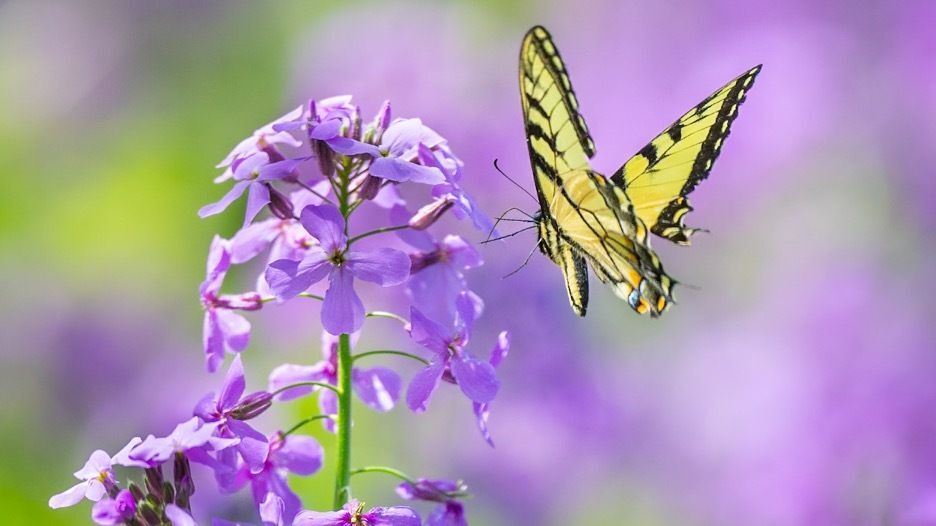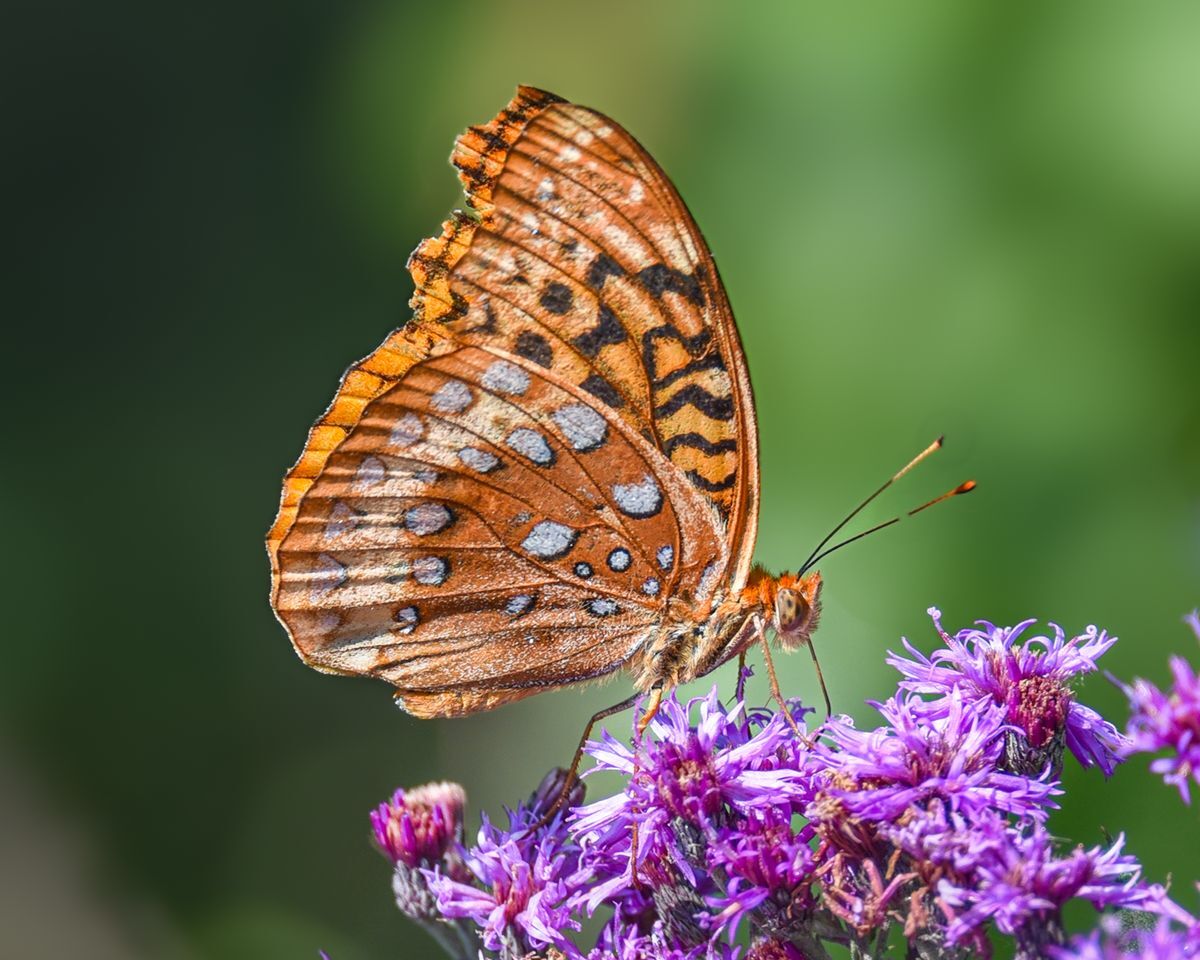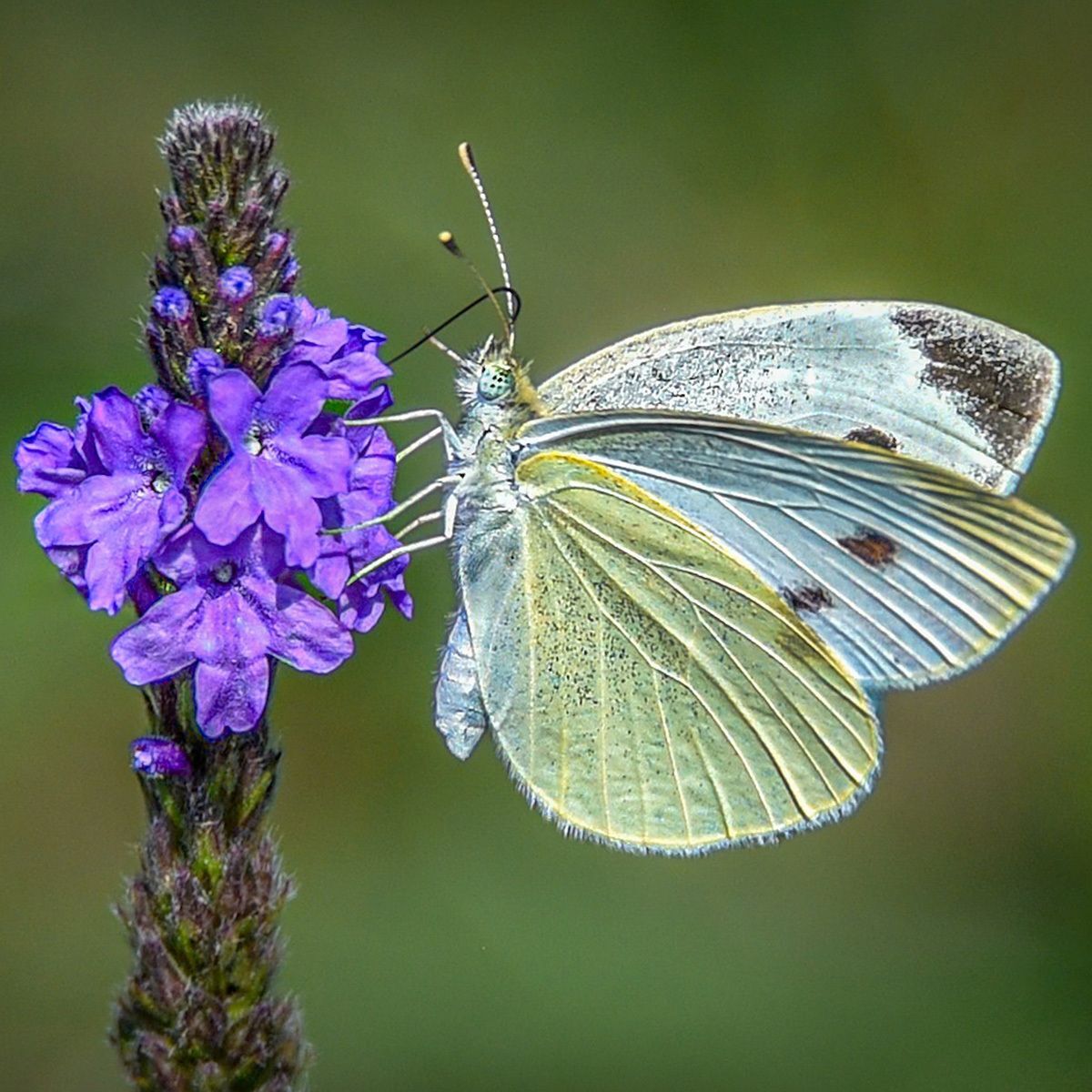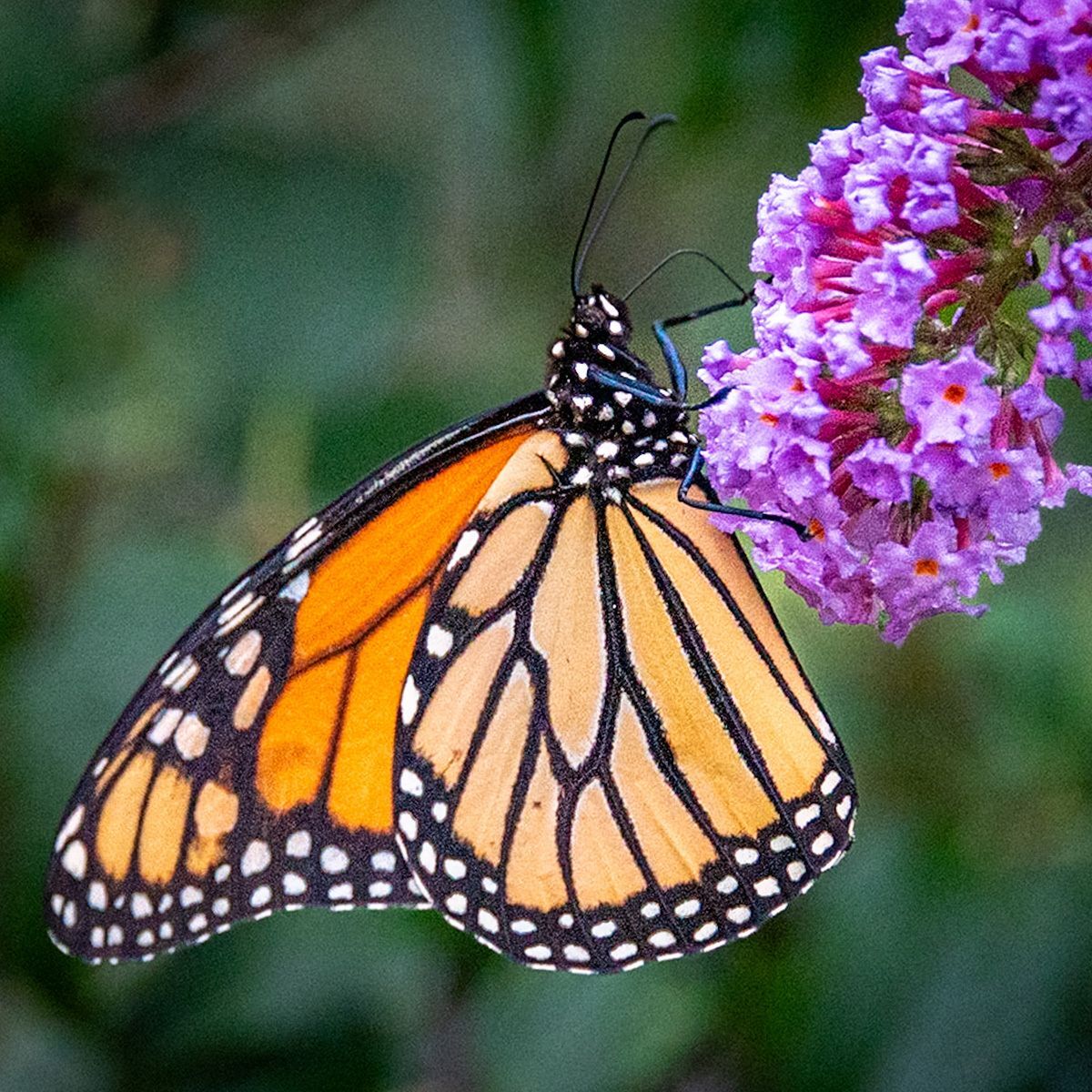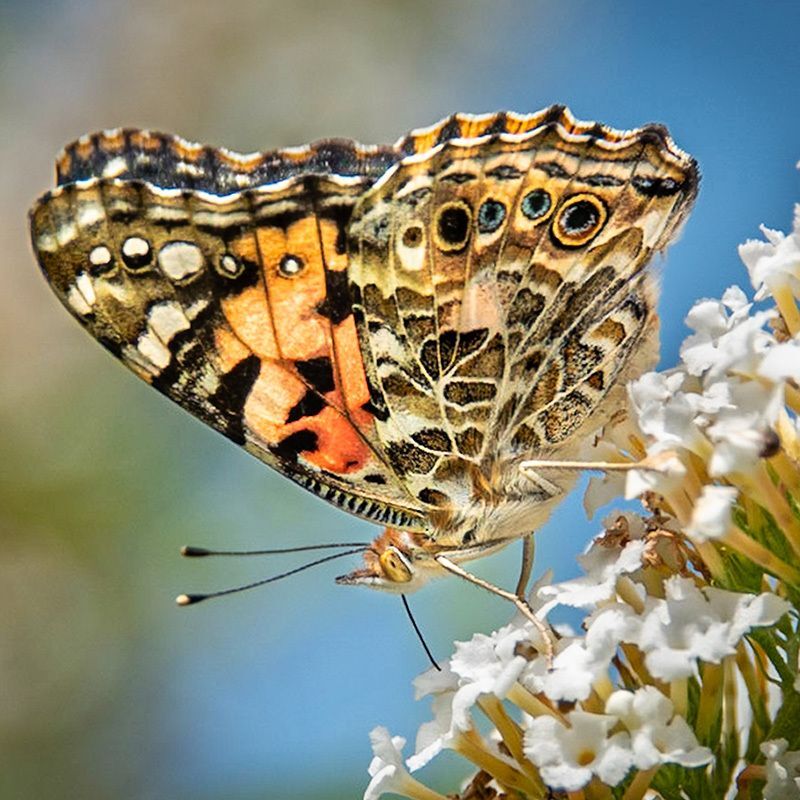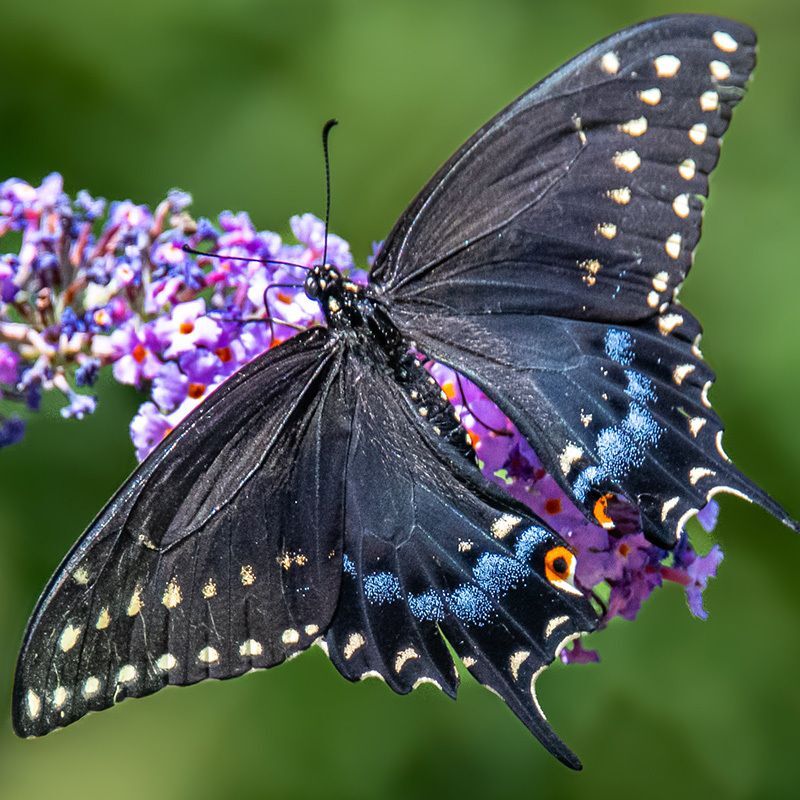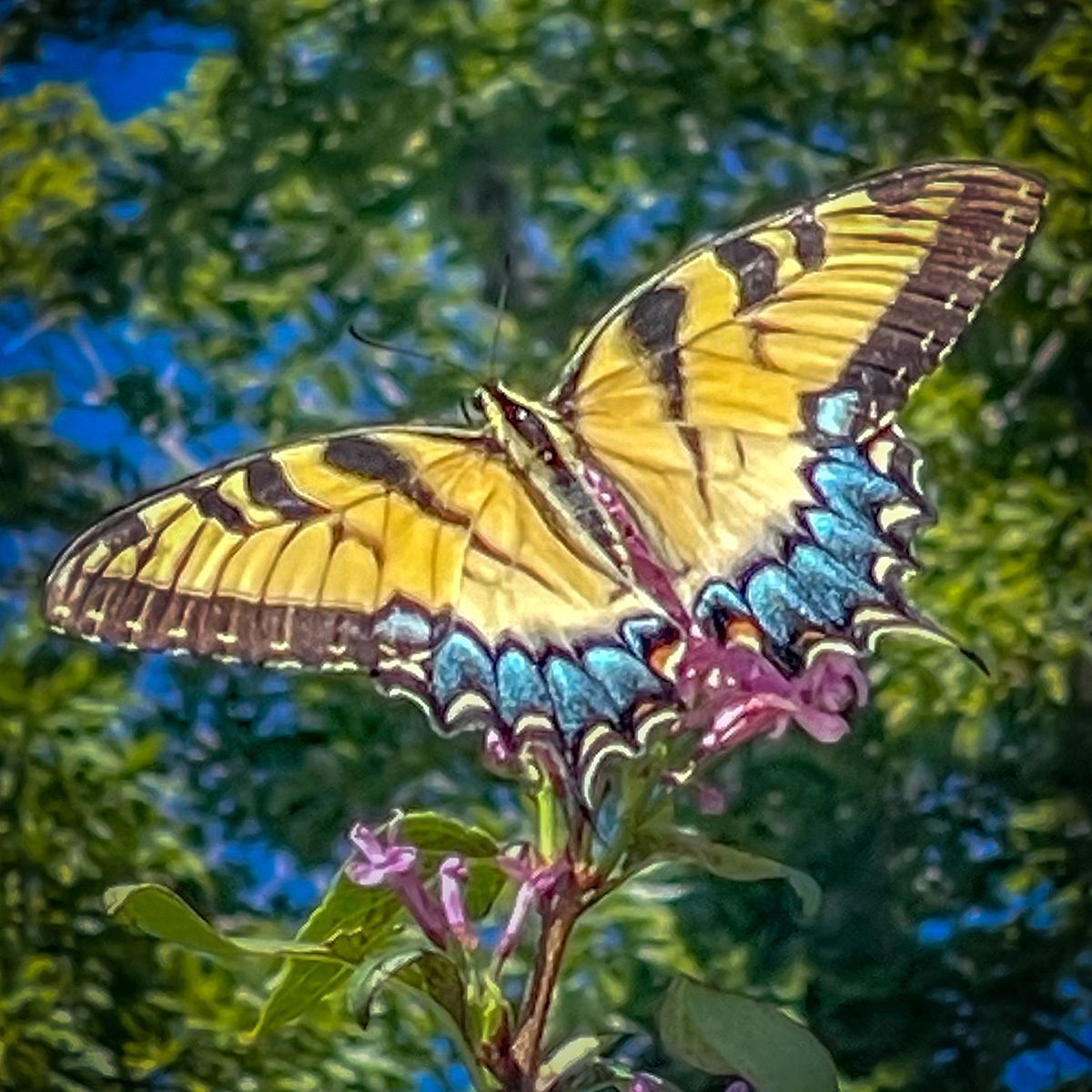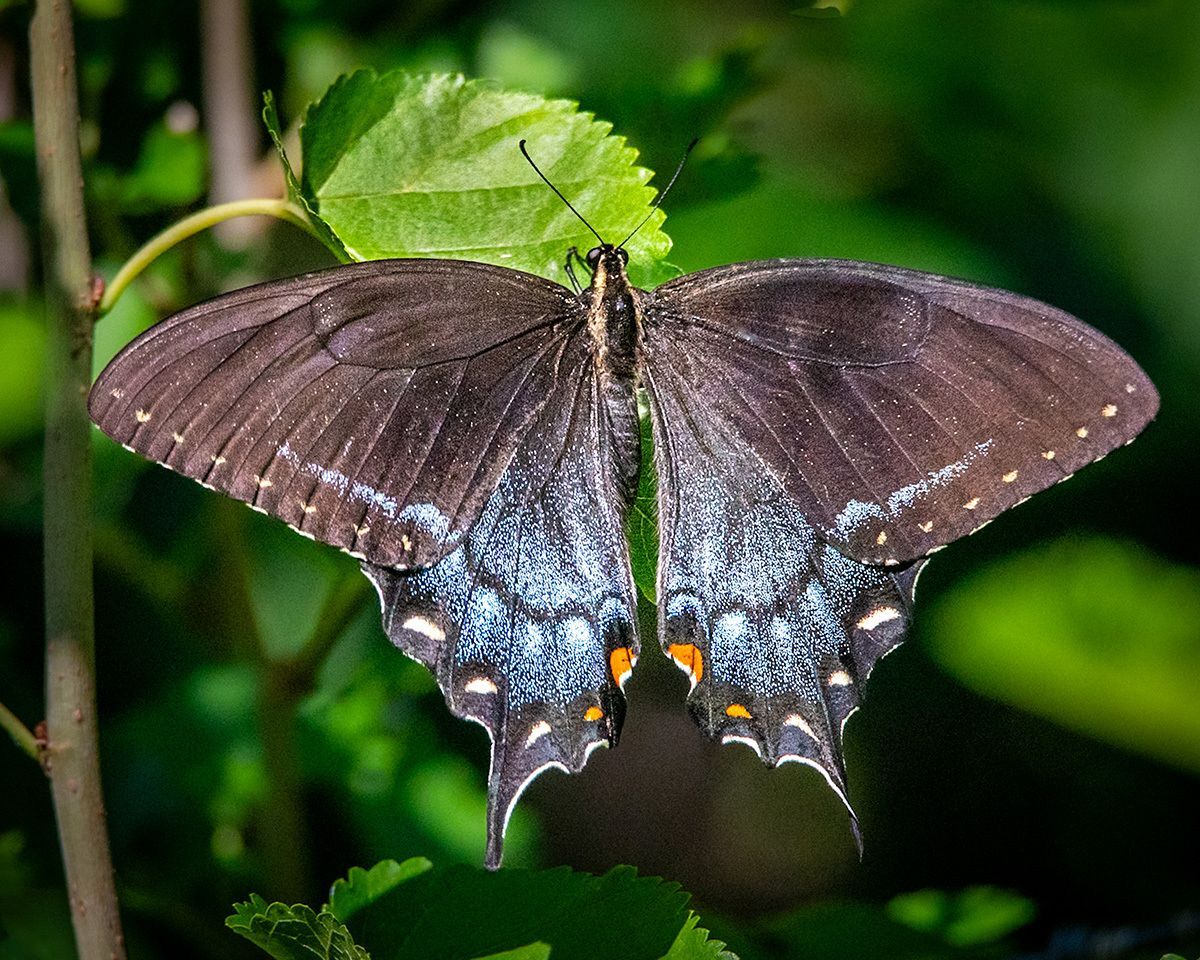“Beautiful and graceful, varied and enchanting, small but approachable, butterflies lead you to the sunny side of life. And everyone deserves a little sunshine.”
— Jeffrey Glassberg (founder and president of North American Butterfly Association)
Butterfly watching or “butterflying” is a relaxing, family-friendly activity that can be enjoyed in backyards, parks and other outdoor spaces. Butterflies come in vibrant colors, vary in shape and are active during the daylight hours. Nebraska is home to more than 200 different butterfly species to identify or simply enjoy in the moment.
In our region, butterflies are most commonly observed from May to August on bright, sunny days with no more than a light breeze. They are most active from 9:30 a.m. to noon and again from 2 p.m. to 3:30 p.m. To fly, they need a body temperature of around 85°F. If the temperatures are cooler, butterflies can be found stationary, basking in the sunshine to warm up. In extreme heat, butterflies seek out shade.
Meet Our Local Butterflies
Butterflies are nearsighted and can only see clearly up to 10-12 feet. They are sensitive to colors, patterns and ultraviolet light. Many flowers have ultraviolet patterns visible to butterflies. Some butterfly species have unique ultraviolet markings on their wings to help attract and identify a mate. They see up and down, forward and backward, and to the sides all at the same time with their compound eyes. Try not to cast your shadow on a butterfly while observing them — they might sense that as a threat and fly away!
Butterflies have taste receptors on their feet. When they land on a flower, they can sense right away if the flower has any nectar on which to feed. If there’s no nectar, the butterfly will fly to the next flower. Female butterflies also use their feet to help choose a tasty host plant to feed hungry caterpillars before laying her eggs.
Butterfly wings are transparent. The thin wing membrane is covered with tiny scales layered like shingles on a roof. Some of the scales contain pigment of their own, but much of the color and patterns are a result of light reflected from the scales. As butterflies age, the scales might rub or fall off, revealing the clear membrane underneath.

